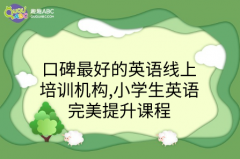小学生想要写好英语作文, 其实有许许多多的技巧和方法。今天小编就总结出了一些,希望能对同学们有所帮助。
一、代入法
这是进行英语写作时常用的方法。同学们在掌握一定的词汇和短语之后,结合一定的语法知识,按照句子的结构特点,直接用英语代人相应的句式即可。如:
1. 他从不承认自己的失败。
He never admits his failure.
2. 那项比赛吸引了大批观众。
The match attracted a large crowd.
3. 他把蛋糕分成4块。
He divided the cake into four pieces.
二、还原法
即把疑问句、强调句、倒装句等还原成基本结构。这是避免写错句子的一种有效的办法。如:
1. 这是开往格拉斯哥的火车吗?
Is this the train for Glasgow?
还原为陈述句:This is the train for Glasgow.
2. 他是因为爱我的钱才同我结了婚。
It was because he loved my money that he married me.
还原为非强调句:Because he loved my money, he married me.
3. 光速很快,我们几乎没法想像它的速度。
So fast does light travel that we can hardly imagine its speed.
还原为正常语序:Light travels so fast that we can hardly imagine its speed.
三、分解法
把一个句子分成两个或两个以上的句子。这样既能把意思表达得更明了,又能减少写错句子的几率。如:
1. 我们要干就要干好。
If we do a thing, we should do it well.
2. 从各地来的学生中有许多是北方人。
There are students here from all over the country. Many of them are from the North.
四、合并法
就是把两个或两个以上的简单句用一个复合句或较复杂的简单句表达出来。这种方法能体现学生的英语表达能力,同时也能提高文章的可读性。如:
1. 我们迷路了,这使我们的旅行变成了一次冒险。
Our trip turned into an adventure when we got lost.
2. 天气转晴了,这是我们没有想到的。
The weather turned out to be very good, which was more than we could expect.
3. 狼是高度群体化的动物,它们的成功依赖于合作。
Wolves are highly social animals whose success depends upon their cooperation.

五、删减法
就是在写英语句子时,把相应汉语句子里的某些词、短语或重复的成分删掉或省略。如:
1. 这部打字机真是价廉物美。
This typewriter is very cheap and fine indeed.
注:汉语表达中的“价”和“物”在英语中均无需译出。
2. 个子不高不是人生中的严重缺陷。
Not being tall is not a serious disadvantage in life.
注:汉语说“个子不高”,其实就是“不高”。也就是说,其中的“个子”在英语中无需译出。
六、移位法
由于英语和汉语在表达习惯上存在差异,根据表达的需要,某些成分需要前置或后移。如:
1. 他发现赚点外快很容易。
He found it easy to earn extra money.
注:it在此为形式宾语,真正的宾语是句末的不定式to earn extra money。
2. 告诉我这事的人不肯告诉我他的名字。
The man who told me this refused to tell me his name.
注:who told me this为修饰the man的定语从句,应置于其后。
3. 直到我遇到你以后,我才真正体会到幸福。
It was not until I met you that I knew real happiness.
注:not...until...为英语中的固定句式,其意为“直到……才……”。
七、分析法
指根据要表示的汉语意思,通过进行语法分析和句式判断,然后写出准确地道的英语句子。如:
1. 从这个角度看,问题并不像人们一般料想的那样严重。
Seen in this light, the matter is not as serious as people generally suppose.
注:分词短语作状语时,其逻辑主语应与句子主语一致,由于the matter与see之间为被动关系,故see要用过去分词seen。
2. 我没有见过他,所以说不出他的模样。
Not having met him, I cannot tell you what he is like.
注:如果分词的动作发生在谓语动作之前,且与逻辑主语是主动关系,则用现在分词的完成式。
八、意译法
有的同学在写句子时,一遇见生词或不熟悉的表达,就以为是“山穷水尽”了。其实,此时我们可以设法绕开难点,在保持原意的基础上,用不同的表达方式写出来。如:
1. 汤姆一直在扰乱别的孩子,我就把他撵了出去。
Tom was upsetting the other children, so I showed him the door.
2. 有志者事竟成。
Where there is a will, there is a way.
3. 你可以同我们一起去或是呆在家中,悉听尊便。
You can go with us or stay at home, whichever you choose.

 400-009-0512
400-009-0512




 微信服务号
微信服务号 微信服务号
微信服务号